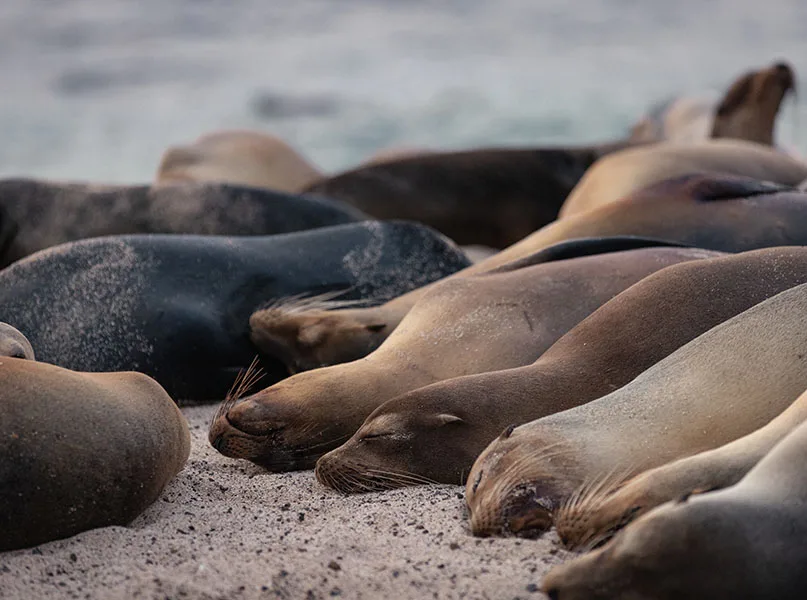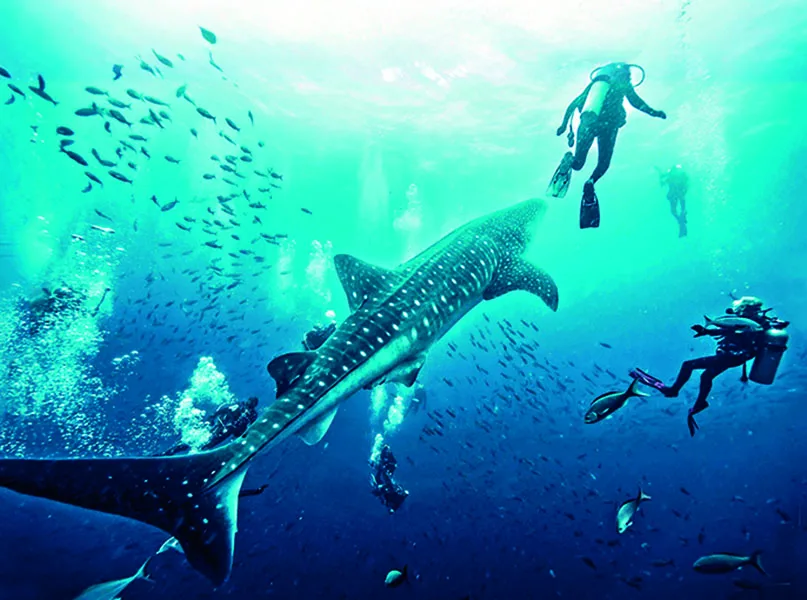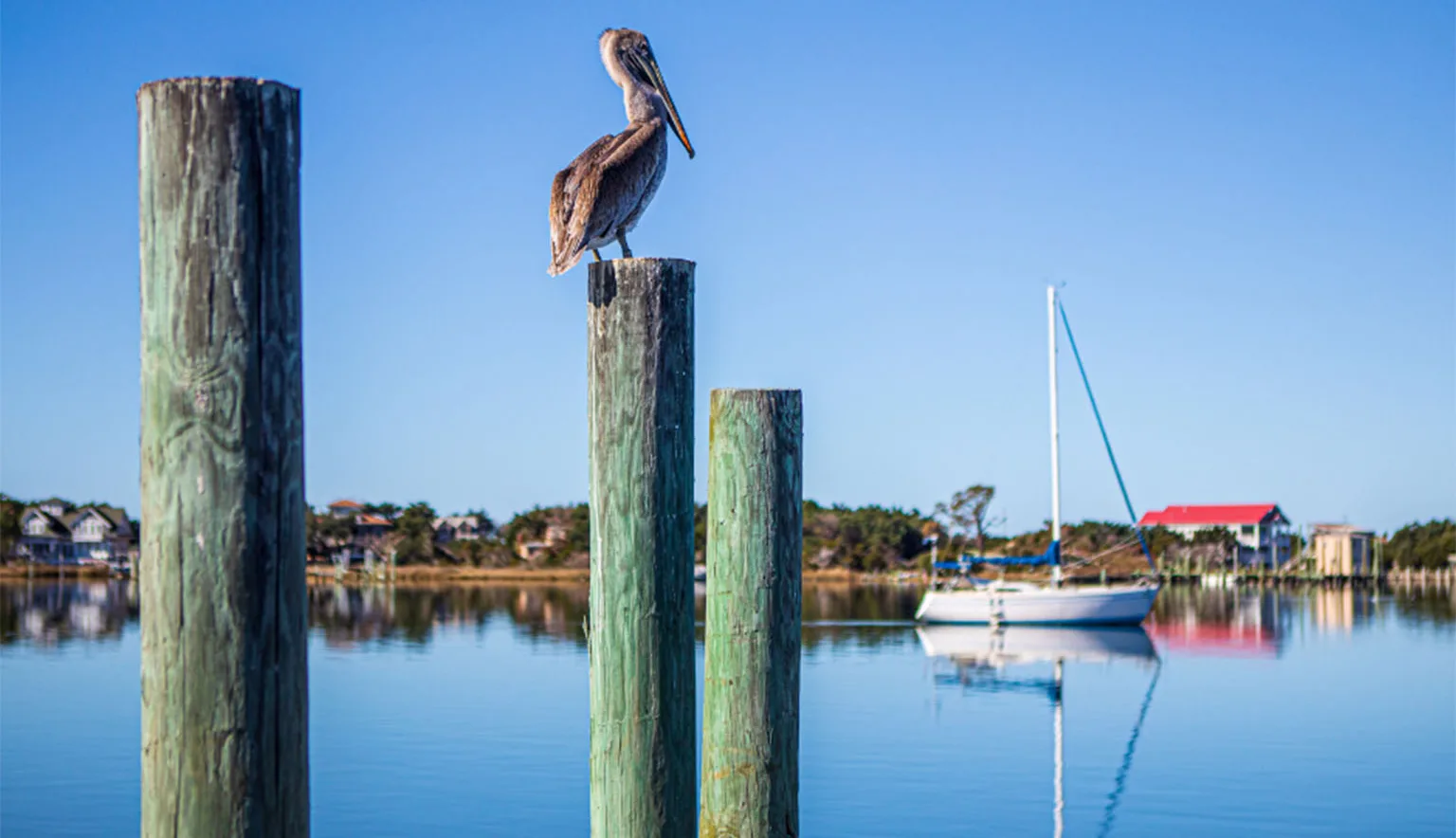Responsible for positioning Ecuador as a world-class destination, the Ministry of Tourism of Ecuador promotes sustainable, inclusive, and innovative tourism that showcases the incredible diversity of the country’s four worlds – the Amazon, the Andes, the Coast, and the Galápagos Islands. Mateo Estrella, Minister of Tourism, tells us more about the organisation’s commitment to enhancing visitor experiences, empowering local communities, and conserving the country’s natural and cultural heritage
Q&A WITH THE MINISTRY OF TOURISM OF ECUADOR
Firstly, in what ways do the Galápagos Islands stand out from the rest of Ecuador as a top travel destination?
Mateo Estrella, Minister of Tourism (ME): They are truly a living museum and natural sanctuary.
Whilst mainland Ecuador offers breathtaking volcanoes, rich cultural traditions, and vibrant cities, the Galápagos Islands are unmatched in their pristine beauty and scientific significance.
They are the only place on Earth where you can walk amongst species found nowhere else, surrounded by crystal-clear waters and untouched landscapes that captivate every traveller.
Can you highlight some unique features of the archipelagos’ three main islands: San Cristóbal, Santa Cruz, and Isabela?
ME: San Cristóbal is a favourite amongst adventure seekers – it’s home to the only permanent freshwater lake in the Galápagos Islands, El Junco Lagoon, and boasts world-class surf spots like Punta Carola, which is ideal for those looking to ride the waves.
Santa Cruz is the heart of conservation in the Galápagos Islands. It is home not only to the iconic giant tortoises – observed roaming freely in the lush highlands, a moving and unforgettable experience for any traveller – but also the Charles Darwin Research Station, a global hub for scientific study and conservation.
Isabela, the largest island in the archipelago, is a land of volcanic wonder where visitors can hike the impressive Sierra Negra crater, spot wild flamingos in secluded lagoons, and relax on tranquil beaches with stunning sunsets.
The island also offers exceptional opportunities for snorkelling, revealing an underwater world teeming with marine life – sea turtles, rays, and colourful fish amongst lava tunnels and coral reefs.
It’s a true paradise for nature lovers, both above and below the surface.

“Whilst mainland Ecuador offers breathtaking volcanoes, rich cultural traditions, and vibrant cities, the Galápagos Islands are unmatched in their pristine beauty and scientific significance”
Mateo Estrella, Minister of Tourism, Ministry of Tourism of Ecuador
Renowned across the world for its endemic flora and fauna, how can budding conservationists best explore the Galápagos Islands’ incredible wildlife?
ME: The best way to explore the islands’ extraordinary biodiversity is through guided experiences led by certified naturalist guides from formal, authorised tourism operators.
Visitors can discover the archipelago in two main ways: by joining boutique cruises that navigate between islands, offering comfortable onboard accommodation and expert-led excursions, or by staying on inhabited islands and taking daily boat trips to nearby sites, which allow for deeper natural immersion. Both options provide unparalleled access to wildlife and landscapes whilst supporting conservation and sustainable tourism practices.
Currently, the islands offer a wide range of tours, including snorkelling, diving, and wildlife observation, all designed to bring visitors face to face with unique species like marine iguanas, sea lions, blue-footed boobies, and giant tortoises.
These experiences are not only unforgettable – they also contribute directly to conservation and community development.
To explore the area’s deep connection to Charles Darwin’s theory of evolution and know more about ‘nature’s laboratory’, travellers can visit the Charles Darwin Research Station. Here, people can learn about the investigation into endemic species and efforts to preserve them in their natural environments.

How can travellers best experience the magnificence of the Galápagos Islands’ volcanoes and lava tunnels?
ME: To truly experience the volcanic power of the Galápagos Islands, visitors should explore with certified guides via formal tourism services.
Hiking Sierra Negra on Isabela Island – one of the largest volcanic craters in the world – offers breathtaking views and an unforgettable journey through dramatic lava landscapes.
In Santa Cruz, guided tours through ancient lava tunnels provide a unique opportunity to walk inside the geological veins of the islands, learning about their formation in a safe and educational environment. These experiences connect travellers with the raw, untouched essence of the archipelago.
In your opinion, what is the archipelago’s most underrated attraction?
ME: Floreana Island, often overshadowed by its more famous regional counterparts, is a hidden gem teeming with unique wildlife and breathtaking landscapes.
This lesser-known destination boasts stunning beaches, crystal-clear waters, and vibrant marine life, making it a paradise for snorkellers and nature enthusiasts alike.
The island’s rich history, highlighted by tales of its intriguing early settlers and pirates, adds a captivating layer to its charm.
With fewer tourists, Floreana Island offers a serene and authentic experience, allowing visitors to connect with the untouched beauty of the Galápagos archipelago in a way larger islands cannot provide.

What challenges does the Galápagos Islands’ tourism industry face and how are you working to overcome them?
ME: The main challenge is preserving the delicate balance between tourism and conservation. We are committed to sustainable tourism practices, including strict visitor caps, environmental guidelines, and community engagement.
Through collaboration with local authorities, international organisations, and scientific institutions, we are ensuring tourism supports, rather than threatens, the unique ecosystems of the Galápagos Islands.
Are you optimistic about the future of the tourism industry in the Galápagos Islands?
ME: Absolutely. The global demand for meaningful, nature-based travel is growing – and the Galápagos Islands are perfectly positioned to meet it.
With continued investment in sustainability, infrastructure, and local capacity-building, we believe the future is bright.
Our goal is to ensure future generations can continue to marvel at this natural treasure, just as visitors do today.























